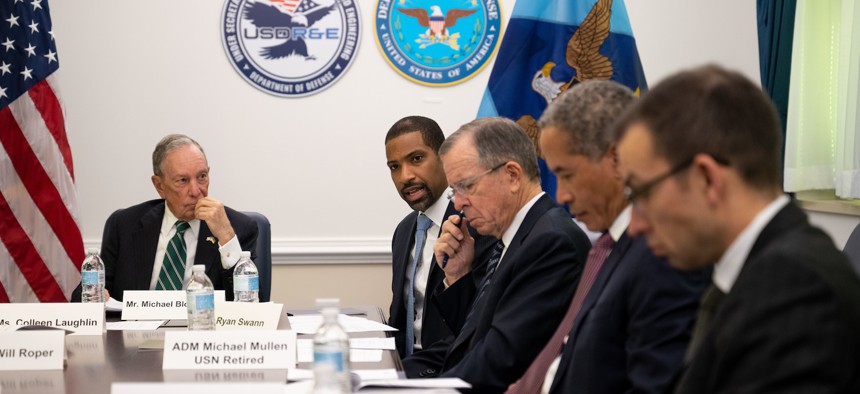MICHAEL R. BLOOMBERG

Russia’s invasion of Ukraine has all the traditional hallmarks of a conventional war, with troops and tanks on the ground and airstrikes from above. But even as today’s battles resemble wars of old, Ukraine has been successfully defending itself beyond expectations in part because of the courage and determination of its people who have used new technology in ways that are changing how wars are fought.
Historically, the speed and accuracy of information that reaches decision-makers has been an Achilles heel of armies. But Ukraine is showing the world how a smaller force can fend off a larger military foe using a readily available mix of military and commercial technologies, especially for communications. The Russia-Ukraine war is a warning: to ready the U.S. military for future conflicts our nation needs far more public-private collaboration, and fast.
When Russian strikes in early 2022 hit Ukraine’s infrastructure and knocked out the ability for Ukrainian military leaders to communicate with their troops, Ukraine moved fast to use commercially available, satellite-based internet access via Starlink and logistics services like FedEx to reopen lines of communication. Since then, hundreds of thousands of Ukrainian civilians have used technology to report critical battlefield information to the government, such as enemy troop movements and local intelligence.
On the battlefield, soldiers with limited weapons use handheld tablets and mobile devices to get real-time data from satellites to target their efforts. Algorithms help Ukrainian troops rapidly determine the most urgent threats and opportunities, from the enemy’s exact location to the weapons most likely to prove effective in a strike.
Traditionally, intelligence about the enemy would be communicated up the chain of command and then down through the military command structure. But Ukrainian troops are accessing this information immediately via an array of drone and satellite imagery, some of it from publicly available sources. Having that data can be the difference between an army’s commanders deciding to advance or retreat from an attack.
Many of these practices are not new; armies using new technologies to win battles is as old as war. And certainly, we will continue to need clearly defined intelligence chains of command. But as Joint Chiefs Chairman Gen. Mark Milley recently said to the Washington Post, “We are witnessing the ways wars will be fought and won for years to come.”
As the United States leads the world’s technological revolution, Department of Defense leaders should continue working to bridge the gap between the public and private sectors in ways that will help ensure the spirit of innovation is put to use advancing America’s defense and security. At the same time, the leaders of America’s most innovative companies must also see the department as a potential customer and feel an obligation to assist in the defense of our country regardless of profits. Patriotism requires more than waving a flag.
The U.S. has taken notice of the critical role technology is playing the in the war in Ukraine, and Defense Secretary Lloyd Austin is making concerted new efforts to break down barriers between the Pentagon and America’s tech community. Red tape and bureaucracy often prevent the Pentagon from capitalizing quickly on America’s technological advantages, which denies our service members capabilities that would help keep them and our nation safe.
The Pentagon’s Defense Innovation Unit based in Silicon Valley is tasked with working with America's most innovative companies and startups to deploy new technologies into the field. In recent years, it has enlisted more than 100 companies that previously were not involved in defense contracts, and it has begun to see the benefits. For instance: The Army and Air Force have incorporated artificial intelligence in aircraft maintenance to help predict what parts of an aircraft need to be repaired before the repair is needed. The Air Force has also been experimenting with commercially produced technology to help servicemembers remotely fly electric aircraft that take off and land vertically.
The past year in Ukraine has underscored how wars will increasingly be won and lost based on which side proves more adept at developing, deploying, and scaling advanced technology. It’s a lesson that Russia is learning the hard way and one that we must take to heart to effectively defend our values at home and abroad.
No comments:
Post a Comment